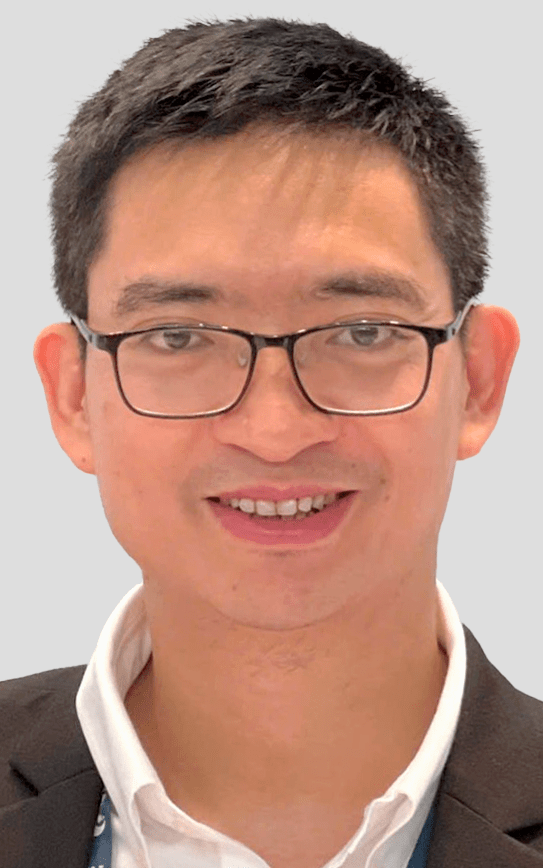Most-watched scientific paper presentation
We talked to Dr. Nguyễn Ngoc Cương, presenting author of the most-watched ET 2024 scientific paper presentation, Interventional treatment for spontaneous chyluria, to find out more about his research and his experience presenting at ET.
The abstract you submitted for ET 2024 on interventional treatment for spontaneous chyluria was one of the highest rated by the Scientific Programme Committee. What do you think made it stand out?
Cương: First of all, let me express my gratitude to the ET conference organizers for giving me the opportunity to present my scientific report at such a prestigious event hosted by CIRSE. Spontaneous chyluria is a rare condition in Western countries, but relatively common in Southeast Asia and South Asia. It has been known for a long time that the cause of chyluria is an abnormal communication between the lymphatic vessels and the urinary tract. However, the specific nature of these abnormal connections remains unclear to this day. With over 40 patients included in our report, we provided some novel insights and introduced several complex interventional techniques, such as thoracic duct puncture, balloon angioplasty, and thoracic duct stenting. These elements contributed to the uniqueness of the presentation and captured the audience’s interest.
How was it for you to present to such an international audience?
Cương: Spontaneous chyluria is one of the abnormalities within the category of central lymphatic obstruction diseases. During our work in lymphatic interventions, the colleagues in Vietnam referred patients with this condition to our hospital for treatment. Over time, this allowed us to frequently study and manage this disease. I have often pondered the challenges in diagnosing and treating this condition. Presenting my research to leading European scientists felt comfortable, because it reflected the work I have become deeply familiar with. Additionally, I viewed this as an incredible opportunity to receive valuable feedback from experts, which will help me further improve care for my patients.
Will you continue to further research treatment for spontaneous chyluria? What’s next?
Cương: Yes, I will continue to delve deeper into researching the treatment of spontaneous chyluria. My research focus will be on cases of recurrence after treatment and cases of treatment failure to better understand the reasons behind these outcomes and how to improve success rates. For instance, I am considering collaborating with urologic surgeons for cases where interventions fail. I also plan to study the causes of thoracic duct obstruction and investigate why, despite its frequency, only some individuals develop spontaneous chyluria as a clinical manifestation. In the near future, I aim to categorize the different anatomic patterns of uro-lymphatic connection and determine which patterns respond best to interventional treatments. I hope to publish these findings in a reputable scientific journal to reach a broader audience and contribute further to the field.
Your presentation has been the most viewed ET 2024 scientific paper presentation on the congress platform as well as in the CIRSE Library. Why do you think it has resonated so much with the audience?
Cương: I think it might be because I am the first Vietnamese physician to appear in the CIRSE Library (smile). Another reason could be that lymphatic interventions are inherently a fascinating topic for many viewers, especially with the introduction of new approaches to thoracic duct intervention. Techniques like balloon angioplasty or stent placement at thoracic duct obstructions could have application for treating other conditions in the future, such as cirrhotic ascites or chylous leaks caused by thoracic duct injuries.
What was some of the personal feedback you received about your presentation both at the congress and since?
Cương: I received several questions during the congress and afterward. For instance: Which type of stent should be used for the thoracic duct? How do you choose the appropriate size of balloon and stent? Could injecting glue into the abnormal uro-lymphatic communication potentially lead to kidney stones?… Some of these questions have sparked new ideas and directions for my future research.
You also won the ET 2024 Best Scientific Paper Award. Do you feel that presenting at the congress and winning the award has had an impact on your career?
Cương: I was fortunate to receive the ET 2024 Best Scientific Paper Award. This recognition has been a tremendous encouragement, motivating me to delve deeper into a challenging field with few peers, like this topic. I would also like to share that after receiving the award, more of my colleagues in Vietnam have become aware of my work. This will undoubtedly lead to more patients being referred to us for treatment in the future. I am sincerely grateful to the ET 2024 organizers for all of this.
Do you have any tips for young physicians on what to watch out for when submitting their first abstract?
Cương: First, don’t be afraid to submit an abstract to the ET conference. We may get accepted or rejected, but that’s a normal part of the scientific environment. The important thing is to keep improving our skills and continue trying each time there is an opportunity. Next, choose a relevant topic. The topic should be directly related to the conference, and it could be either common or rare. However, if we think deeply enough about issues that are directly related to our daily work, we will find a way to present it in a way that interests many people.
Are you planning to submit another abstract for ET 2025?
Cương: I would love to submit an abstract for ET 2025, because I have many ideas, especially topics related to lymphatic intervention embolization. However, I still have some personal planning to arrange, so I will consider it soon.


